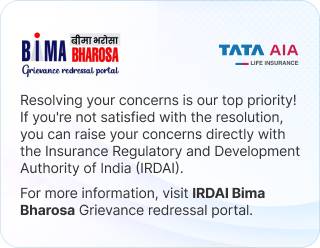Understanding the Minimum Alternate Tax’s meaning involves knowing the MAT applicability, rates, and the intricacies of calculating book profits. It is also essential to be aware of MAT credit, which allows companies to offset MAT paid against their regular tax liability in subsequent years.
In the field of taxation* in India, there exists a critical concept known as Minimum Alternate Tax (MAT).
MAT in income tax was introduced to ensure that even if a company reports substantial profits on its financial statements and utilises various exemptions and deductions during income tax e-filing to bring down its taxable income to zero or near-zero, it still contributes to the nation's tax revenue.
In this comprehensive guide, we will get into the Minimum Alternate Tax meaning, its rates and how it is calculated.
What is MAT?
MAT full form in tax is Minimum Alternate Tax. It is a provision in the Income Tax Act of India. It primarily applies to companies and is designed to ensure that companies that report substantial book profits but pay little to no income tax due to various exemptions and deductions are subject to a minimum level of taxation.
The primary objective behind MAT tax in India is to curb tax avoidance by companies that manipulate their financial statements to reduce their taxable income artificially. It serves as a safeguard to ensure that all companies, irrespective of the exemptions they claim, contribute a minimum amount of tax to the government.
MAT Applicability: Which Companies Should Pay MAT?
MAT in income tax is applicable to all companies under Section 115JB, including foreign companies, that are registered under the Indian Companies Act, 1956 or the Companies Act, 2013.
However, it does not apply to companies that have been granted exemption under Section 10AA of the Income Tax Act, which pertains to Special Economic Zones (SEZs).
Key Points to Note
Before delving into the rates and calculation of MAT tax in India, there are some key points to keep in mind:
- MAT is not applicable to individuals or Hindu Undivided Families (HUFs). It is exclusively applicable to companies.
- MAT is calculated on the "book profits" of a company, which is different from the taxable profits computed under the regular provisions of the Income Tax Act.
Now, let's explore the rates and calculation of MAT tax.
Minimum Alternate Tax Rates in India
Historical Perspective
The MAT rate has undergone several changes over the years. To understand the current rates, let's briefly review its historical evolution:
- Before April 1, 2011: The MAT rate was 18.5% of book profits.
- April 1, 2011, to April 1, 2016: MAT rate was increased to 18.5% plus a surcharge and education cess.
- April 1, 2016, onwards: MAT rate is 18.5% plus a surcharge and education cess, as applicable.
Current Minimum Alternate Tax Rates in India
The current MAT rate in India is 15% of book profit, effective from Assessment Year (AY) 2020-21.
However, it's essential to check the latest rates as they might have been subject to changes in subsequent Finance Acts. Additionally, MAT may be subject to applicable surcharge and cess as per the prevailing tax laws.
It's important to note that MAT is calculated on "book profit," which is computed differently from regular taxable income.
Companies subject to MAT tax in India need to calculate their tax liability based on the higher of regular taxable income under the Income Tax Act or book profit calculated as per the provisions of the MAT provisions.
MAT Calculation: How to Determine MAT Tax Liability?
Under Section 115JB of the Income Tax Act, all companies are mandated to pay corporate tax. The applicable tax amount will be the greater of the following two:
- Normal Tax Liability: This refers to the computation of tax based on the company's taxable income, utilising the tax rates applicable to the company.
- Minimum Alternate Tax: MAT is computed at a current rate (15% since AY 2020-21), subject to surcharge and cess as applicable, on the book profit.
What is Book Profit?
Under Section 115JB(2), the net profit reflected in the profit and loss statement is called the "book profit." The P&L statement must be prepared in accordance with Schedule III of the Companies Act, 2013.
Computation of Book Profits
To calculate MAT, the first step is to determine the "book profits" of the company. This is a crucial and somewhat complex step, as it involves various adjustments to the profits as per the company's financial statements.
Here are the key components that affect the computation of book profits:
- Net Profit as per the Profit and Loss Account: This is the starting point for calculating book profits. It is the net profit disclosed in the company's audited profit and loss statement.
- Adjustments: Certain items are added back to the net profit, such as depreciation, loss on sale of assets, and deferred tax assets.
- Income tax paid or payable, including provisions for the same.
- Expenditure linked to incomes that qualify for exemption under sections 10 (excluding section 10(38)), 11, and 12.
- Amounts transferred to any reserves except those specifically outlined under Section 33AC.
- The amount of expenditure associated with income on which no income tax is payable in line with the provisions of Section 86.
- Dividends paid or proposed.
- Provisions for unascertained liabilities.
- Provisions for losses incurred in subsidiary companies.
- Exemptions: Any income exempt under the Income Tax Act is reduced from the net profit. For instance, income from investments in tax-free bonds is exempt and should be excluded.
- Deductions: Deductions under the Income Tax Act, such as deductions for export profits under Sections 80HHC, 80HHE, and 80HHF, are also added back to the net profit.
- Amounts withdrawn from reserves or provisions.
- Incomes that are exempt under sections 10, 11, and 12 (except those covered under section 10(38)).
- Depreciation debited to the profit and loss statement, excluding depreciation stemming from the revaluation of assets.
- Amounts drawn from the revaluation reserve, provided it does not surpass the depreciation attributable to the revaluation of assets.
- Provisions for future liabilities: Any provisions made for future liabilities, like gratuity, are also added to the net profit.
- Dividend Distribution Tax (DDT): The DDT paid by the company is added to the net profit.
Example Calculation: How is the Company's Tax Liability Calculated?
Let's illustrate the calculation of MAT tax in India with a simplified example:
Suppose Company XYZ reports a taxable income of ₹4 crore in its audited financial statements.
After making various adjustments and considering exemptions, deductions and provisions, the company's book profit is determined to be ₹5 crore.
Normal Tax Liability at 30% on the overall taxable income |
The MAT liability for Company XYZ (assuming the applicable MAT rate for the assessment year is 15%) |
Normal Tax Liability = Taxable Income * 30% Normal Tax Liability = ₹4,00,00,000 * 30% Normal Tax Liability = ₹1,20,00,000 |
MAT Liability = Book Profit * MAT Rate MAT Liability = ₹5,00,00,000 * 15% MAT Liability = ₹75,00,000 |
Here, Normal Tax Liability is higher than MAT. Thus, the company will have to pay the Normal Tax Liability of ₹1,20,00,000
Understanding MAT Credit
One of the important aspects to consider during MAT calculation is the concept of MAT credit.
MAT credit is a mechanism that allows companies to set off the MAT paid against their regular income tax liability in subsequent years when their tax liability under the regular provisions exceeds the MAT liability.
Conditions for MAT Credit
To avail of MAT credit, the following conditions must be met:
- The company has paid MAT under the provisions of Section 115JB of the Income Tax Act.
- The company has subsequently paid tax under the regular provisions of the Income Tax Act.
- The excess of regular tax over MAT is allowed as a credit to be carried forward for up to 15 years.
Example of MAT Credit
Let's continue with our example of Company XYZ. Suppose in the subsequent year, the company's regular tax liability under the normal provisions of the Income Tax Act is ₹1,20,00,000 crore, while its MAT tax liability is ₹75,00,000 crores.
In this case, Company XYZ can utilise the MAT credit, which is the excess of regular tax over MAT:
MAT Credit = Regular Tax - MAT Liability
MAT Credit = ₹1,20,00,000 - ₹75,00,000
MAT Credit = ₹45,00,000
So, Company XYZ can offset ₹45,00,000 against its regular tax liability for the year.
Conclusion
Minimum Alternate Tax (MAT) is a critical provision in India's tax system, aimed at ensuring that profitable companies do not escape tax liability through various exemptions and deductions during income tax e-filing.
As tax laws are subject to change with each Budget, it's vital for companies and individuals to stay updated on the latest provisions related to MAT. Consulting with tax experts and professionals is advisable to ensure compliance with MAT regulations and to optimise tax planning strategies effectively.










 FOR EXISTING POLICY
FOR EXISTING POLICY 
 FOR NEW POLICY
FOR NEW POLICY 








